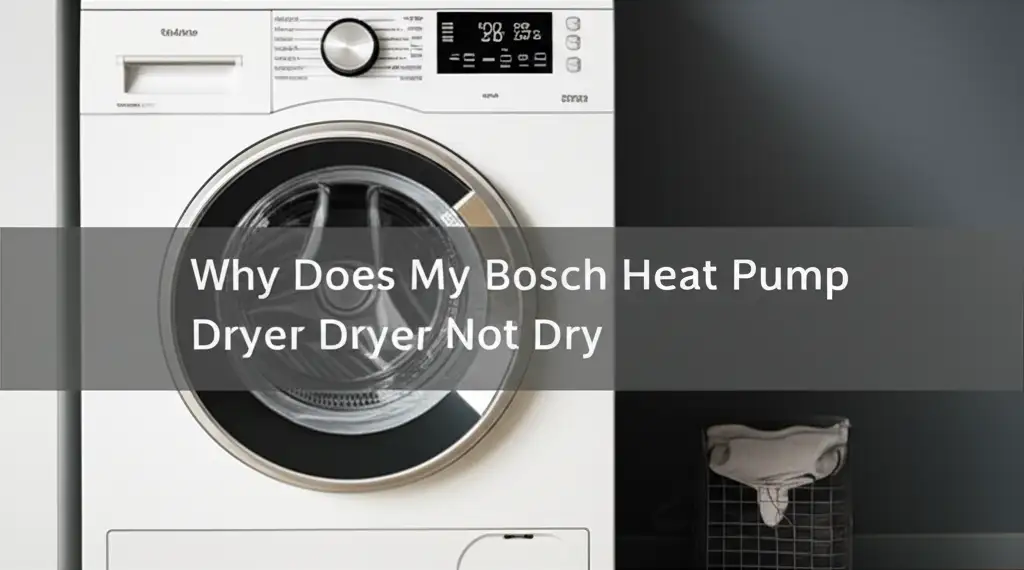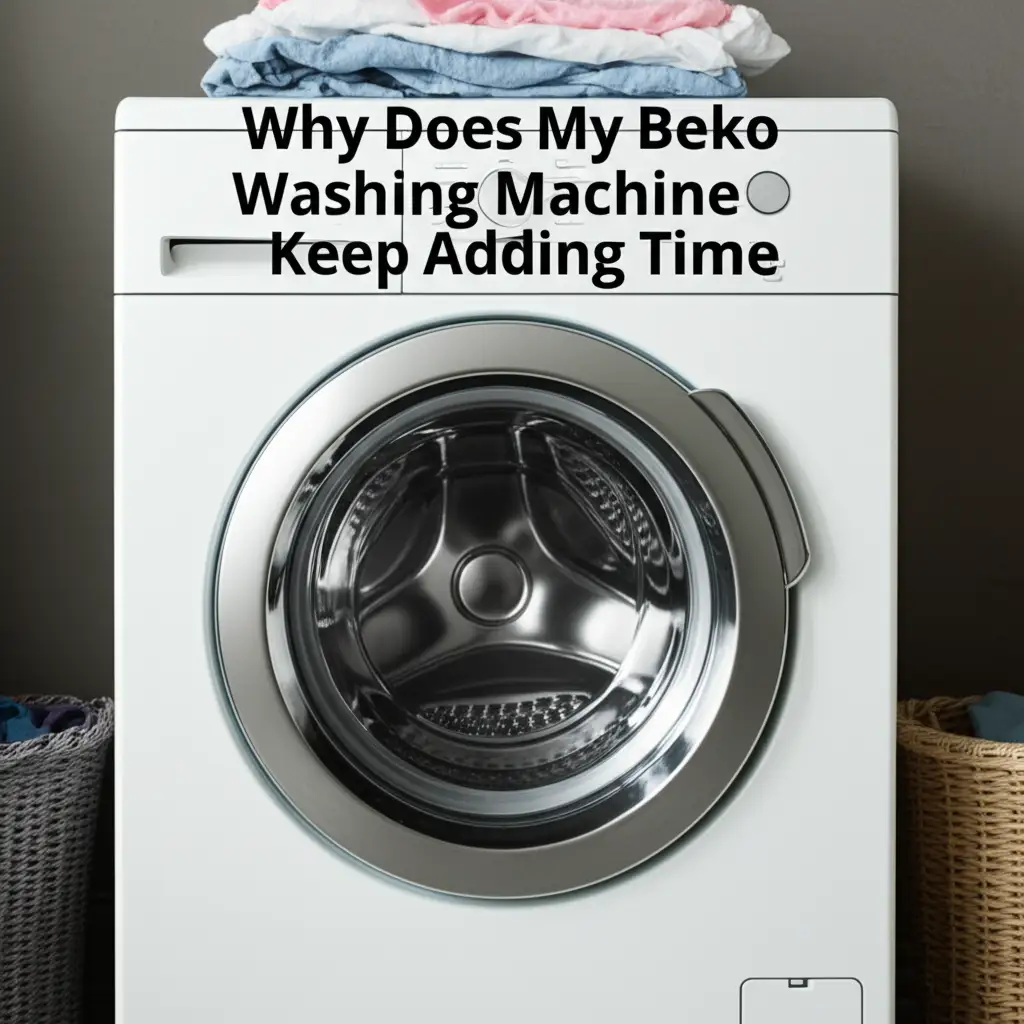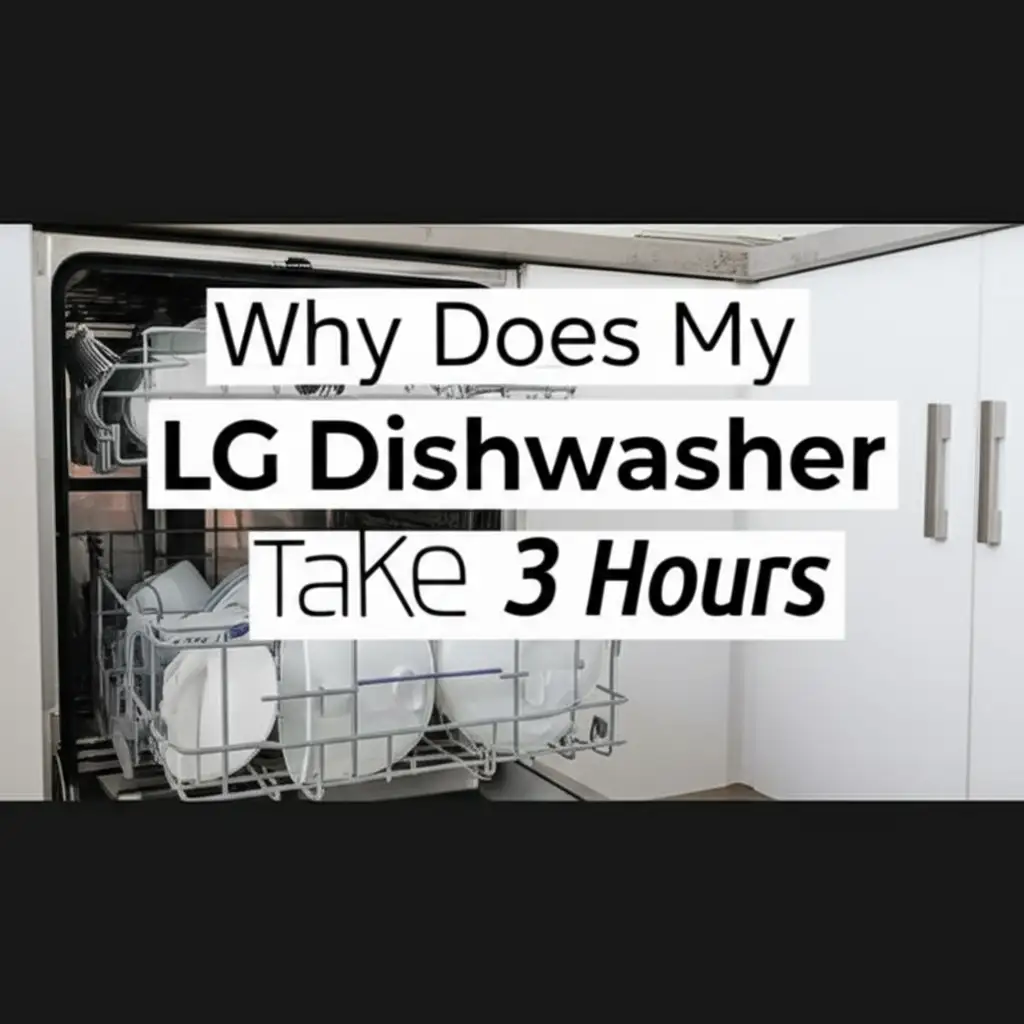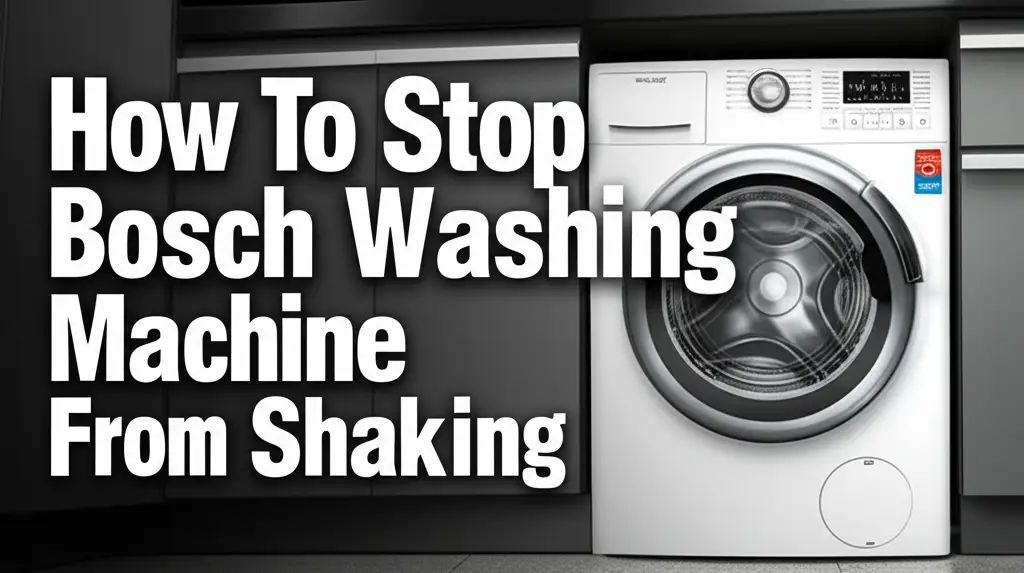· Todd Martin · Home Appliances · 16 min read
Why Does My Bosch Heat Pump Dryer Not Dry

Bosch Heat Pump Dryer Not Drying? Here’s Why!
There is nothing quite like pulling warm, perfectly dry laundry from your dryer. It is a satisfying feeling. However, that satisfaction quickly turns into frustration when your clothes come out damp or still soaking wet. If you are asking, “Why does my Bosch heat pump dryer not dry?”, you are not alone. This is a common issue for many owners. I understand how frustrating it can be when an essential appliance stops working as expected.
Bosch heat pump dryers are highly efficient machines. They use a closed-loop system to dry clothes. This technology reuses hot air, saving energy. But, like all appliances, they can develop problems that affect performance. We will explore the most common reasons why your Bosch heat pump dryer might not be drying your clothes effectively. This article will guide you through simple troubleshooting steps. You can identify and fix the problem.
Takeaway
- Clean Regularly: Routinely clean the lint filter and condenser.
- Check Water Drainage: Ensure the drain hose or condensate container works.
- Verify Sensors: Inspect moisture and temperature sensors for blockages.
- Load Correctly: Avoid overloading and use the right drying program.
- Seek Professional Help: Contact a technician for complex internal component failures.
Your Bosch heat pump dryer may not dry clothes due to clogged lint filters, a blocked condenser, or issues with the water drainage system. Problems with moisture or temperature sensors can also prevent proper drying. Incorrect loading, improper program selection, or internal component failures are other common causes.
Understanding Your Bosch Heat Pump Dryer: The Basics
Your Bosch heat pump dryer operates differently from traditional vented dryers. It works like a refrigerator in reverse. Instead of expelling hot, moist air outside, it recycles it. This system uses a heat pump to dehumidify the air. It then reheats the air and circulates it back into the drum.
This process is highly energy-efficient. It also protects your clothes from extreme heat. The dryer collects moisture from your clothes as water. This water either drains away or collects in a container. When your Bosch heat pump dryer doesn’t dry, it often points to a disruption in this closed-loop system. We need to identify which part of this clever process is failing.
Heat pump dryers work quietly and efficiently. They are a smart choice for any home. Understanding their basic operation helps in troubleshooting. Knowing how your dryer should work makes it easier to spot issues. Let us dive into the specific problems now.
Common Culprits: Lint Filters and Condenser Cleanliness
One of the most frequent reasons your Bosch heat pump dryer isn’t drying is related to lint and condenser blockages. These issues restrict airflow. Proper airflow is essential for the drying process. The dryer cannot remove moisture effectively without it. This is often the first place I check when my own dryer acts up.
You might find that your Bosch dryer takes a long time to dry clothes before it stops drying completely. This is a common symptom of restricted airflow. Regular cleaning prevents these common problems. It helps maintain your dryer’s efficiency and lifespan.
Lint Filter Clogging
Every drying cycle produces lint. Your dryer has a lint filter designed to capture this lint. Over time, this filter can become heavily clogged. A clogged lint filter prevents air from circulating freely through the drum. This means humid air gets trapped inside.
This significantly extends drying times. Eventually, it stops the drying process altogether. You should clean the lint filter after every single load. Simply pull it out and remove the collected lint. Rinse it with water occasionally to remove any residue.
Make sure the lint filter is completely dry before putting it back. A clean lint filter ensures optimal airflow. This simple step makes a huge difference in your dryer’s performance.
Condenser Blockage
Beneath the lint filter, Bosch heat pump dryers have a condenser. This component is crucial for dehumidifying the air. It cools the moist air, turning water vapor back into liquid water. Over time, lint and fabric softener residue can accumulate on the condenser fins.
This buildup acts as an insulating layer. It reduces the condenser’s efficiency. When the condenser cannot cool the air properly, it cannot remove moisture from your clothes. The clothes remain damp. Bosch recommends cleaning the condenser periodically.
The frequency depends on your usage. You can usually access the condenser behind a flap at the bottom of the dryer. Follow your dryer’s manual for specific instructions on how to remove and clean it. Some models have a self-cleaning condenser, reducing the need for manual intervention, but checking it periodically is still a good idea. Discover more if your Bosch dryer takes so long to dry due to such issues.
Water Removal: Drain Hose and Condensate Container
A heat pump dryer extracts water from your clothes. It then needs to get rid of that water. Your Bosch dryer either drains this water automatically or collects it in a container. If the dryer cannot remove this water, it cannot dry your clothes. The system essentially becomes waterlogged.
This is a critical part of the drying cycle. Any obstruction in this path stops the process. It’s like trying to fill a bucket that’s already full. The dryer needs space for new water.
Drain Hose Kinks or Blocks
Many Bosch heat pump dryers can be connected to a drain. This feature automatically empties the collected water. If you use this option, check the drain hose. The hose might be kinked or twisted behind the dryer. It could also be blocked by lint or debris internally.
A blocked drain hose prevents water from escaping. This causes water to back up into the system. The dryer’s sensors detect this backup. They will then stop the drying cycle or prevent it from starting. Disconnect the hose and visually inspect it for kinks or blockages.
You might need to flush it with water to clear any internal obstructions. Ensure the hose has a continuous downward slope for proper drainage. A restricted drain hose can cause significant drying issues.
Condensate Container Full/Not Emptying
If your Bosch dryer is not connected to a drain, it collects water in a condensate container. This container must be emptied after each drying cycle. If you forget to empty it, the dryer will stop operating. It cannot collect any more water.
The dryer will show an indicator light or an error code. This tells you the container is full. Simply remove the container and empty the collected water. Sometimes, the sensor that detects the water level in the container can become faulty. This might cause the dryer to think the container is full when it is not.
Clean the container and the area where it sits to ensure proper sensor readings. If your heat pump dryer is not collecting water, this is a prime area to investigate. Learn more about why your heat pump dryer might not be collecting water.
Sensor Sensitivity: Moisture and Temperature Readings
Bosch heat pump dryers use advanced sensors to determine when your clothes are dry. These sensors detect the moisture level in the drum. They also monitor the air temperature inside the dryer. If these sensors are not working correctly, the dryer will misjudge the drying progress. It might stop the cycle too early. Alternatively, it might run indefinitely without fully drying the clothes.
Sensor problems can be tricky to diagnose. However, they are often a key reason for incomplete drying. A little cleaning can often resolve sensor issues. Proper sensor function is crucial for efficient drying cycles.
Moisture Sensor Issues
Your Bosch dryer has moisture sensors inside the drum. These are usually metal strips located near the lint filter. Clothes tumble over these strips during the cycle. The sensors detect electrical resistance, which changes with moisture levels. If these sensors get coated with fabric softener residue or lint, their readings become inaccurate.
They might falsely detect that clothes are dry when they are still damp. This causes the dryer to stop prematurely. Clean these metal strips regularly with a soft cloth and a small amount of rubbing alcohol. Avoid abrasive cleaners that could damage the sensors.
Ensure they are completely dry before operating the dryer again. Clean sensors provide accurate readings. This ensures your clothes are dried to perfection.
Temperature Sensor Problems
Besides moisture sensors, your Bosch heat pump dryer also has temperature sensors. These sensors monitor the air temperature within the drying system. They ensure the dryer operates at optimal temperatures. If a temperature sensor is faulty, it might give incorrect readings.
This can lead to the dryer overheating or not heating enough. In a heat pump dryer, the heat is generated efficiently. If the heat pump system itself struggles to produce enough warmth, the clothes will not dry. A malfunctioning temperature sensor could be signaling incorrect temperatures. This can cause the dryer’s control board to adjust heating incorrectly.
This leads to damp clothes. Diagnosing a faulty temperature sensor often requires a multimeter. This is usually a job for a qualified technician. If your Bosch dryer runs but provides no heat, a sensor or the heat pump system could be the culprit.
Loading and Program Selection: User Best Practices
Sometimes, the issue isn’t with the dryer itself but with how it’s used. Incorrect loading or selecting the wrong drying program can significantly impact drying performance. Bosch heat pump dryers are designed for efficiency. But they rely on correct user input to perform their best. I’ve personally made these mistakes. It is easy to do when you are rushing.
Understanding how to load your dryer and which program to choose is important. It ensures your clothes come out perfectly dry every time. These simple adjustments can save you time and energy. They prevent unnecessary wear on your appliance.
Overloading the Drum
Stuffing too many clothes into the dryer drum is a common mistake. An overloaded drum prevents proper airflow. Clothes cannot tumble freely. This means hot, dry air cannot circulate effectively around all items. The result is uneven drying. Some clothes might feel dry, while others remain damp.
Overloading also puts strain on the dryer’s motor and components. This can lead to increased energy consumption. It can also cause premature wear. Always ensure there is enough space for clothes to tumble freely. A good rule of thumb is to fill the drum no more than two-thirds full.
This allows for optimal air circulation. It also ensures efficient drying for every item. If you often overload, your dryer might even stop unexpectedly. Learn more about why your Bosch heat pump dryer keeps stopping.
Incorrect Program Selection
Bosch heat pump dryers offer various drying programs. These programs are tailored for different fabric types and moisture levels. Selecting the wrong program can result in clothes that are not dry. For example, using a “delicates” cycle for heavy towels will likely leave them damp. The delicate cycle uses lower temperatures and shorter drying times.
Ensure you choose a program appropriate for the load type. Read your dryer’s manual to understand what each program is designed for. Use sensor dry programs when possible. These programs automatically detect moisture and adjust the drying time. This ensures efficient and complete drying.
If your Bosch heat pump dryer takes too long, incorrect program selection could be a factor. Understand why your Bosch heat pump dryer might be taking so long. Sometimes, the default settings are not ideal for every load. Adjusting the dryness level settings can also help.
Internal Airflow and Dryer Placement
While heat pump dryers do not vent outside, internal airflow is still critical. The system relies on efficient air circulation within its closed loop. Any restriction to this internal circulation can impair drying performance. Proper placement of the dryer also plays a subtle but important role. This is often overlooked.
A dryer needs some space around it to operate efficiently. This ensures components do not overheat. It also allows for proper air intake and exhaust within the machine itself. These small details contribute to the overall drying process.
Restricted Internal Air Circulation
Within your Bosch heat pump dryer, air constantly circulates. It picks up moisture from clothes. It then passes through the condenser. After this, it gets reheated and sent back to the drum. Any internal blockages can restrict this flow. This includes stray socks, small items, or lint accumulating in unexpected places.
These blockages can happen in the internal ducts or fans. If the air cannot move freely, the moisture removal process is compromised. This leads to longer drying times. Eventually, it results in damp clothes.
Regular professional servicing can help identify these internal blockages. They can be hard for a homeowner to spot. Keeping your dryer free of internal debris is key.
Dryer Placement and Ventilation
The placement of your Bosch heat pump dryer can also affect its performance. While it doesn’t need external venting, it still needs adequate space for heat dissipation. The heat pump components themselves generate some heat. This heat needs to dissipate into the surrounding room.
If the dryer is in a very small, confined space with poor ventilation, it can overheat. This can cause the dryer to shut off prematurely. It can also reduce its efficiency. Ensure there’s enough clearance around the dryer.
Check the manufacturer’s recommendations for minimum clearances. Providing good ambient ventilation in your laundry area is beneficial. This helps the dryer operate at its optimal temperature. It supports its energy-efficient design.
When Parts Fail: Deeper Issues
Sometimes, the problem with your Bosch heat pump dryer not drying goes beyond simple maintenance. Internal components can fail over time. These issues are less common. However, they often require professional diagnosis and repair. These are the more serious possibilities.
I recommend calling a certified technician if you suspect one of these problems. Tampering with internal components without proper knowledge can be dangerous. It could also void your warranty. Knowing about these potential failures can help you communicate effectively with a repair person.
Heat Pump System Problems
The heat pump is the core of your dryer’s technology. It comprises a compressor, evaporator, and condenser. If any part of this system malfunctions, the dryer will not produce enough heat or dehumidify the air. This results in clothes that remain wet. Issues could range from a refrigerant leak to a faulty compressor.
These problems are complex. They require specialized tools and expertise to diagnose and repair. Symptoms might include unusual noises, lack of heat, or the dryer simply not working. If you suspect a heat pump issue, call a Bosch service technician.
They have the training to handle these intricate repairs. It is not a DIY fix. A failing heat pump means your dryer loses its core function.
Motor or Belt Issues
The drum inside your dryer needs to spin for proper drying. This tumbling action exposes all sides of the clothes to the warm, dry air. A motor powers the drum. A belt connects the motor to the drum. If the motor fails or the belt breaks, the drum will not spin.
Clothes will just sit in a static pile. They will not dry, even if heat is present. You might hear the dryer running but no tumbling sound. Or you might hear a thumping noise. A broken belt is usually visible if you can access the dryer’s internal components.
A motor issue might require professional diagnosis. A technician can inspect the motor and belt. They can determine if replacement parts are needed. You might notice your Bosch dryer stopping after only a few minutes if the motor or belt is failing.
Electrical and Control Board Issues
The control board is the brain of your Bosch heat pump dryer. It manages all functions and cycles. If the control board malfunctions, it can send incorrect signals. It might fail to send any signals at all. This can lead to erratic behavior. The dryer might not start. It might stop mid-cycle. Or it might not dry clothes properly.
Power supply problems can also cause issues. Make sure the dryer is properly plugged into a working outlet. Check your home’s circuit breaker for tripped breakers. Fluctuations in power can sometimes affect the control board.
A technician can test the control board for faults. They can also check the wiring and electrical connections. These are complex issues that need professional attention. Do not attempt to fix electrical problems yourself.
FAQ Section
How do I clean the condenser on my Bosch heat pump dryer?
To clean the condenser, open the cover at the bottom left of your dryer. Remove the condenser unit by unlocking the latches. Rinse it thoroughly under running water to remove lint and debris. Use a soft brush for stubborn spots. Ensure it is completely dry before reinserting it. This process improves airflow and drying efficiency.
Why is my Bosch dryer running but not getting hot?
If your Bosch dryer runs but stays cold, it could be a problem with the heat pump system itself, a faulty temperature sensor, or an issue with the control board. For heat pump dryers, the heating is generated by the heat pump. A fault in its components (like the compressor or refrigerant) will stop heat production. This requires professional diagnosis.
How often should I clean the lint filter and condenser?
You should clean the lint filter after every single load to ensure maximum airflow and efficiency. The condenser should be cleaned every few months, or as indicated by your dryer’s maintenance reminder. Frequent use or linty fabrics might require more frequent condenser cleaning. Regular cleaning prevents performance issues.
Can overloading cause my Bosch heat pump dryer not to dry?
Yes, overloading the dryer drum is a common reason for incomplete drying. Overfilling prevents clothes from tumbling freely. This restricts proper airflow, leaving damp spots. It also puts undue stress on the dryer’s motor and components. Always leave enough space for clothes to move around.
What should I do if my Bosch dryer shows an error code?
Consult your Bosch dryer’s user manual. Error codes provide specific information about what the dryer believes is wrong. The manual will often list common error codes and their corresponding troubleshooting steps. If you cannot resolve the issue, record the error code and contact Bosch customer support or a certified technician for assistance.
Is a Bosch heat pump dryer supposed to take longer to dry than a traditional dryer?
Generally, Bosch heat pump dryers might take slightly longer for a full cycle compared to traditional vented dryers. This is because they use lower temperatures and a more gentle, energy-efficient drying process. However, the difference should not be extreme. If drying times are excessively long, it indicates a problem needing attention.
Conclusion
A Bosch heat pump dryer that isn’t drying can be a real headache. But, as we’ve explored, many common issues have simple solutions. My hope is that this guide helps you pinpoint the problem. Start with the easiest checks: cleaning the lint filter and condenser. Then move on to checking the water drainage system. Finally, consider sensor issues or how you are loading the dryer.
Remember, proper maintenance is key to keeping your Bosch heat pump dryer performing optimally. Regular cleaning and correct usage can prevent many problems. If, after trying these troubleshooting steps, your Bosch heat pump dryer still refuses to dry your clothes, it is time to call in the experts. Don’t hesitate to contact a qualified appliance technician. They can diagnose more complex internal component failures. Getting your dryer back to perfect working order means enjoying fresh, dry laundry once again.
- Bosch dryer
- heat pump dryer
- dryer troubleshooting
- appliance repair
- laundry tips
- drying issues
- home maintenance





